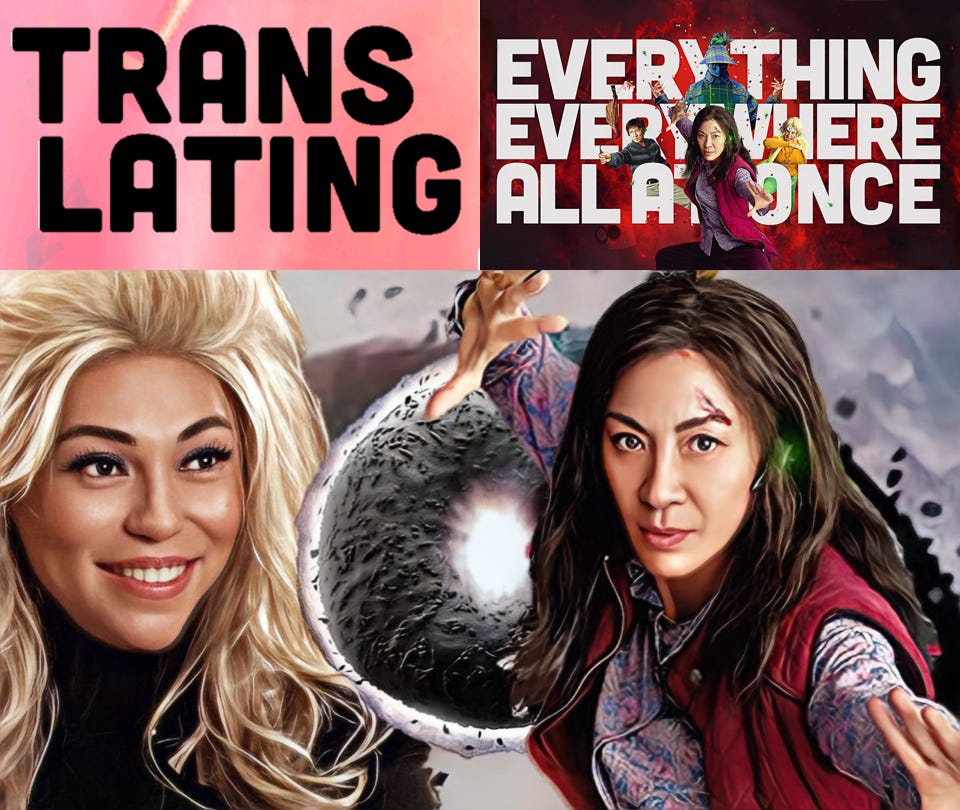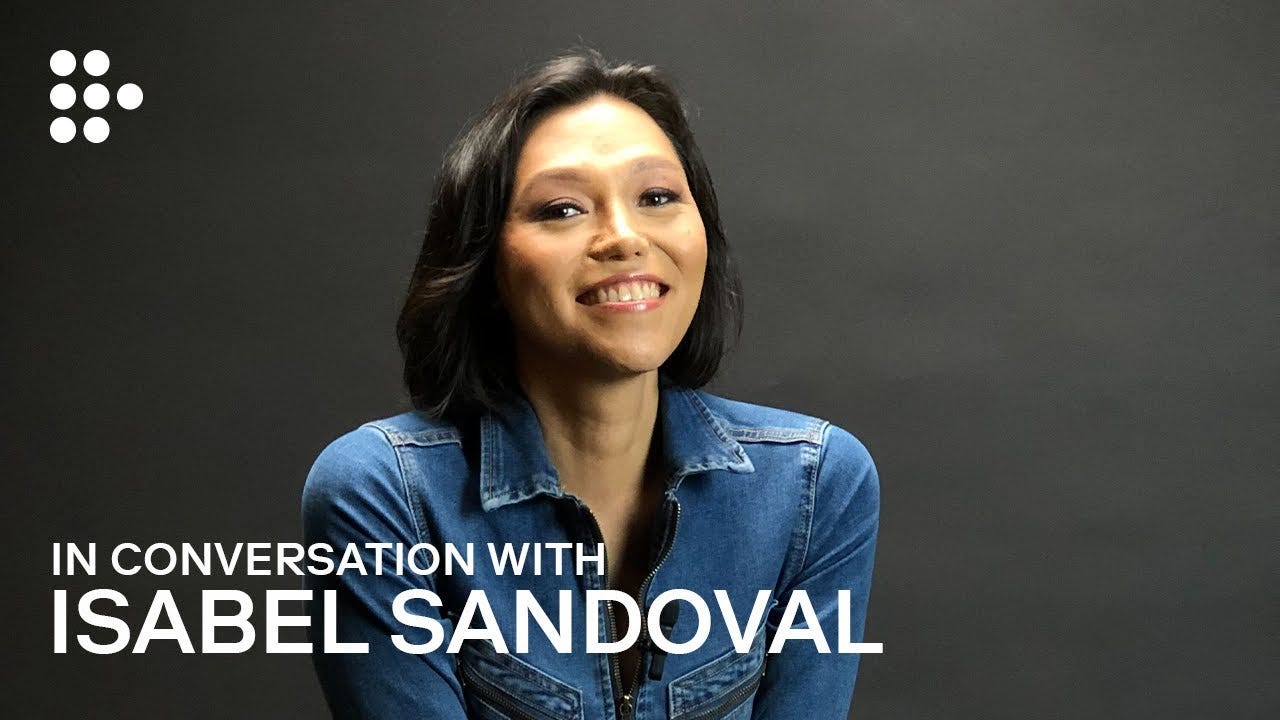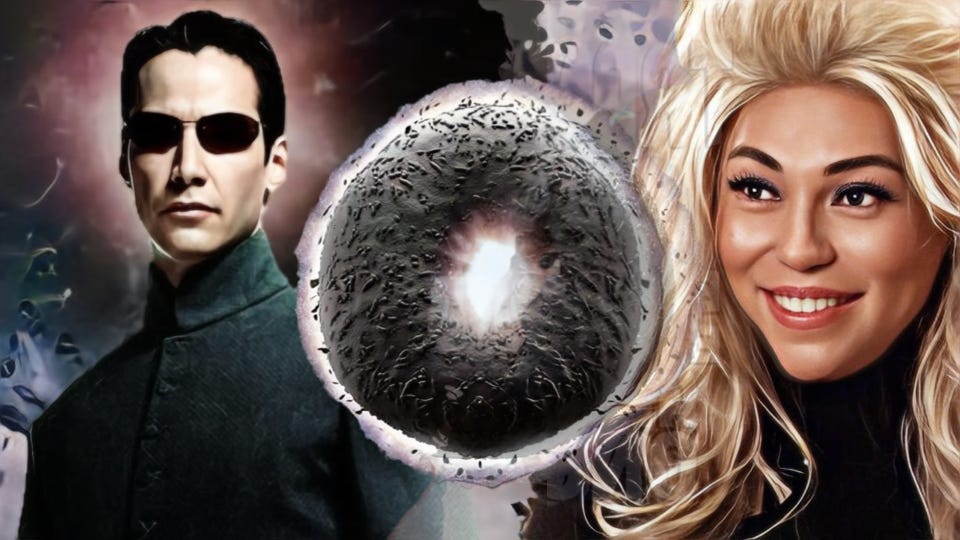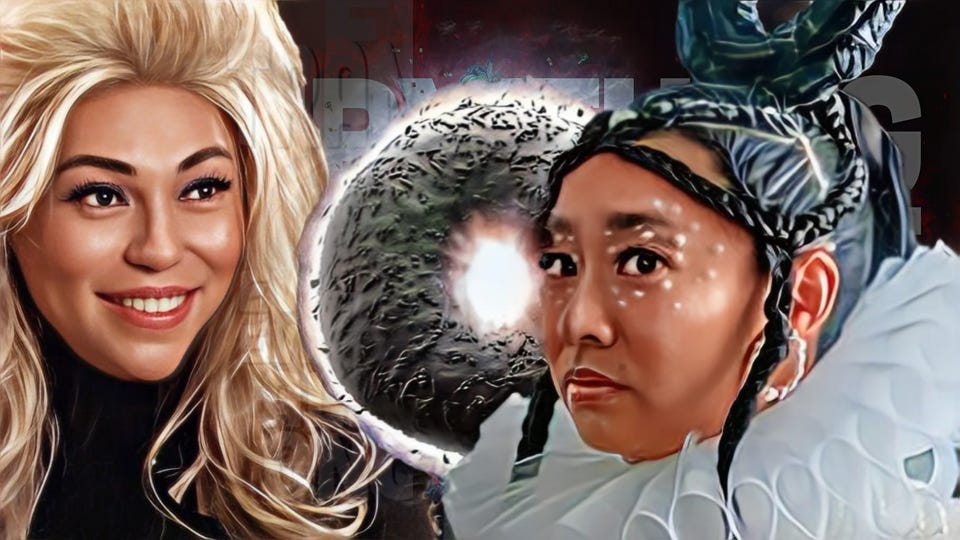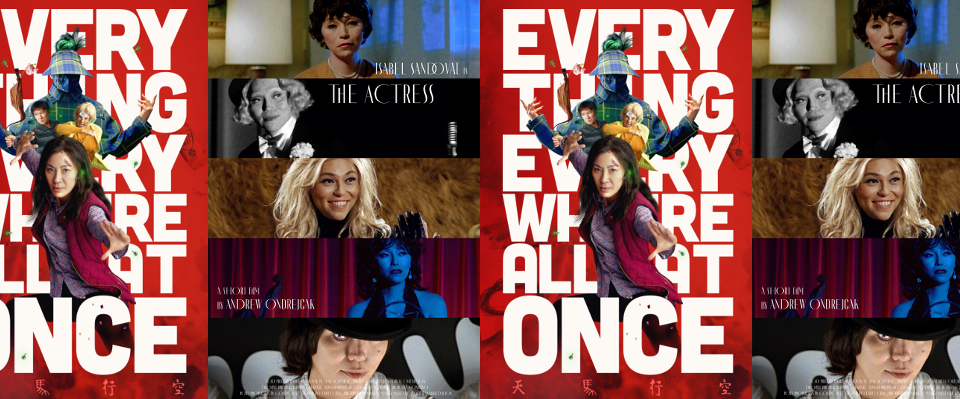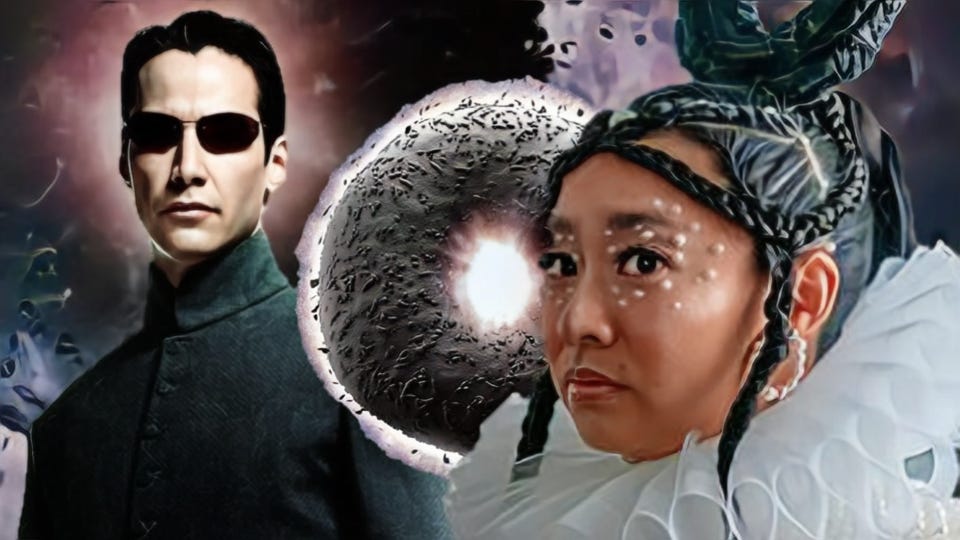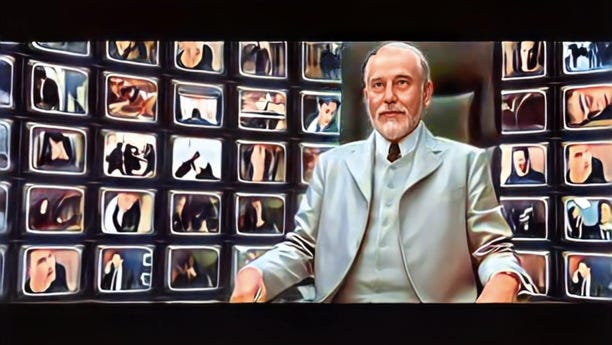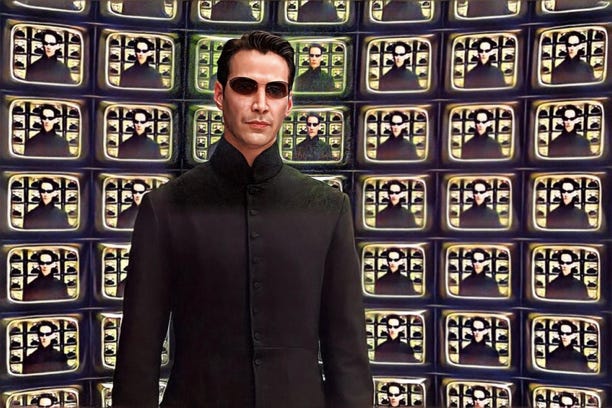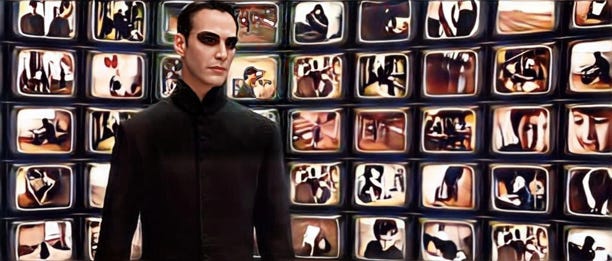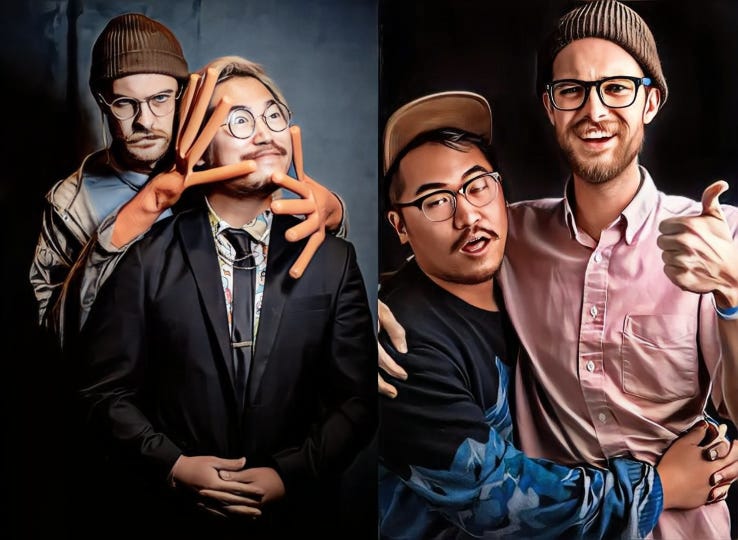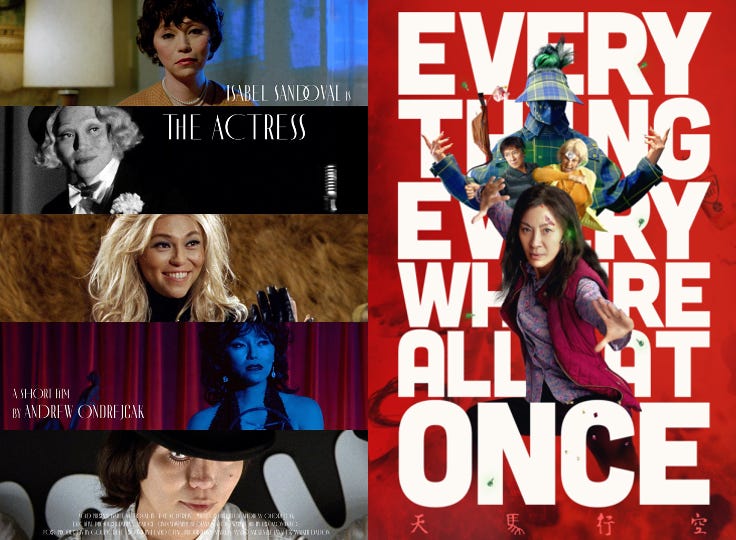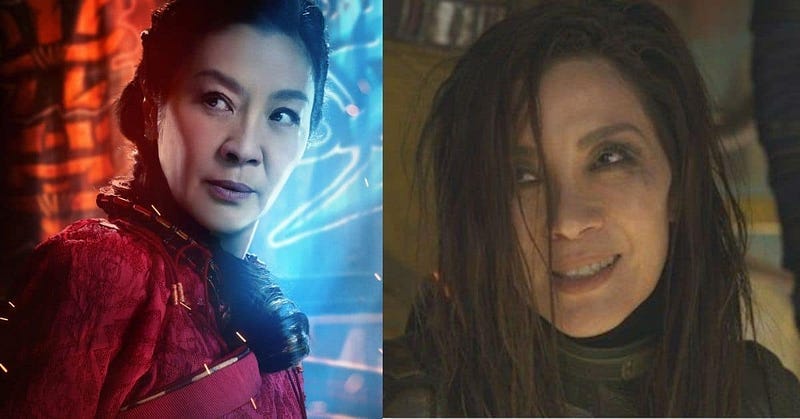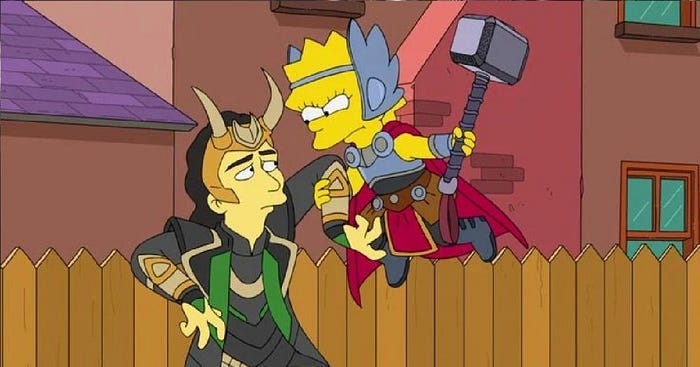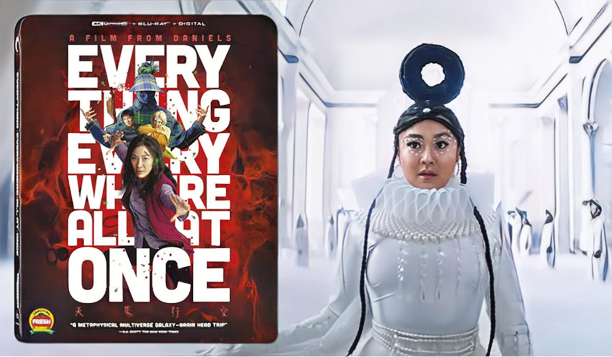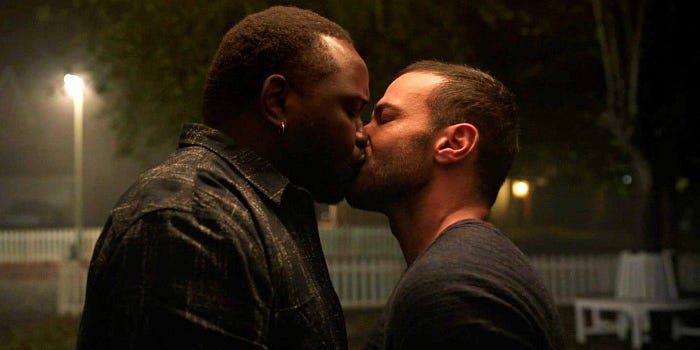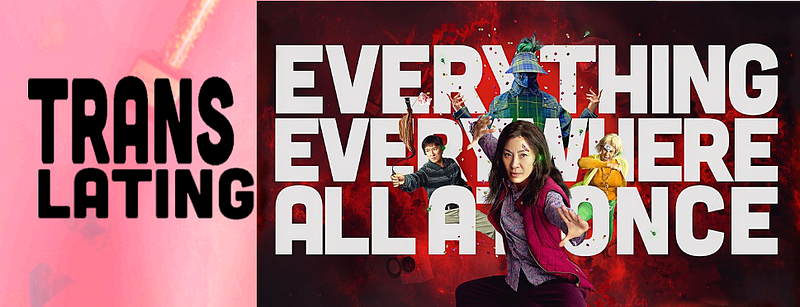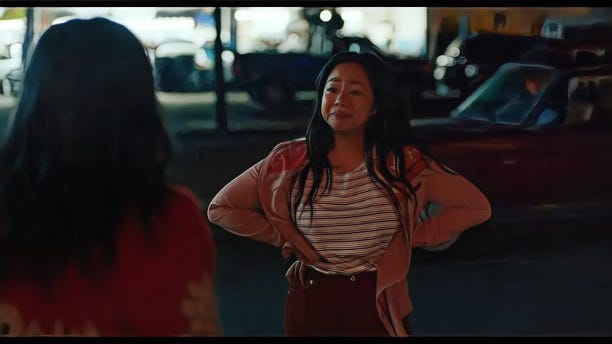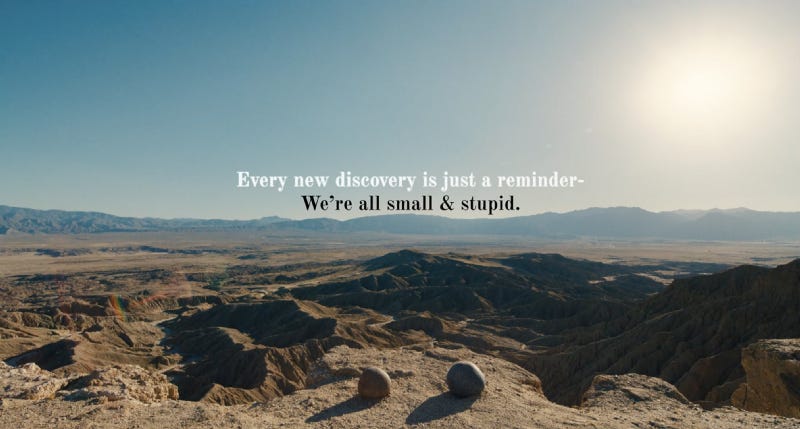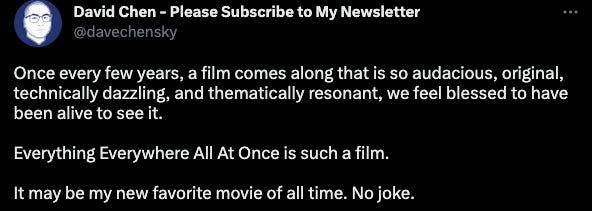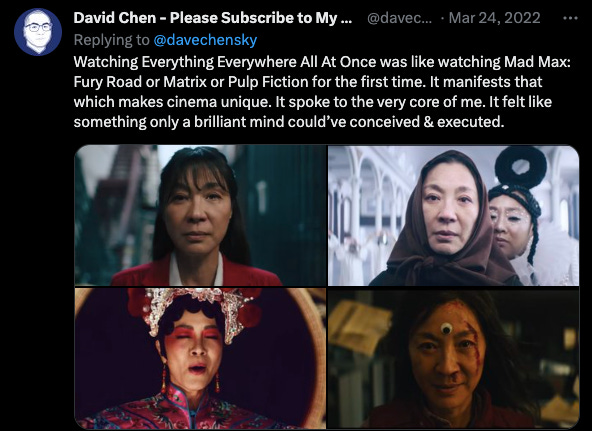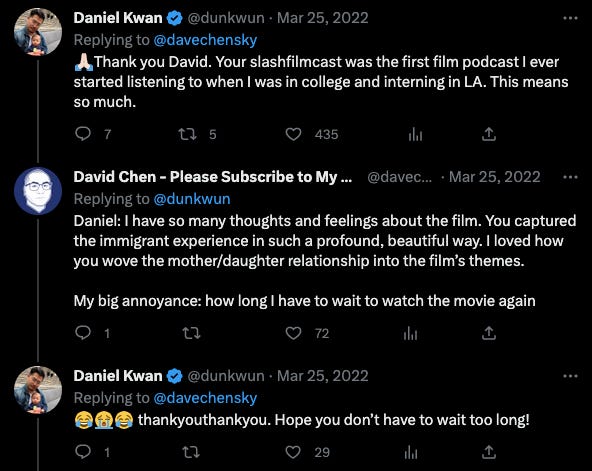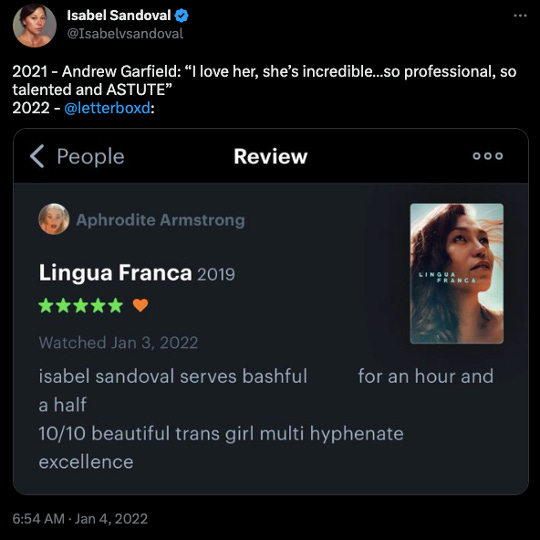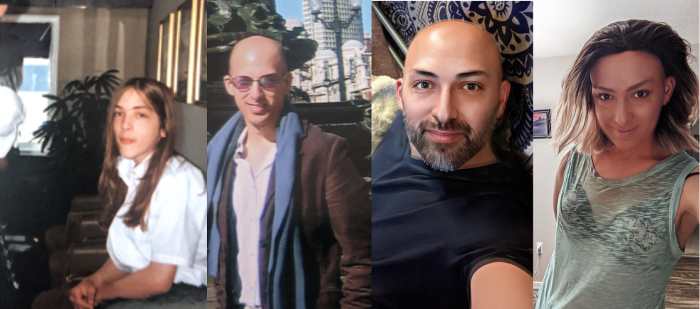TRANSlating Everything Everywhere All At Once
A movie overflowing with transcendent connections to trans cinema
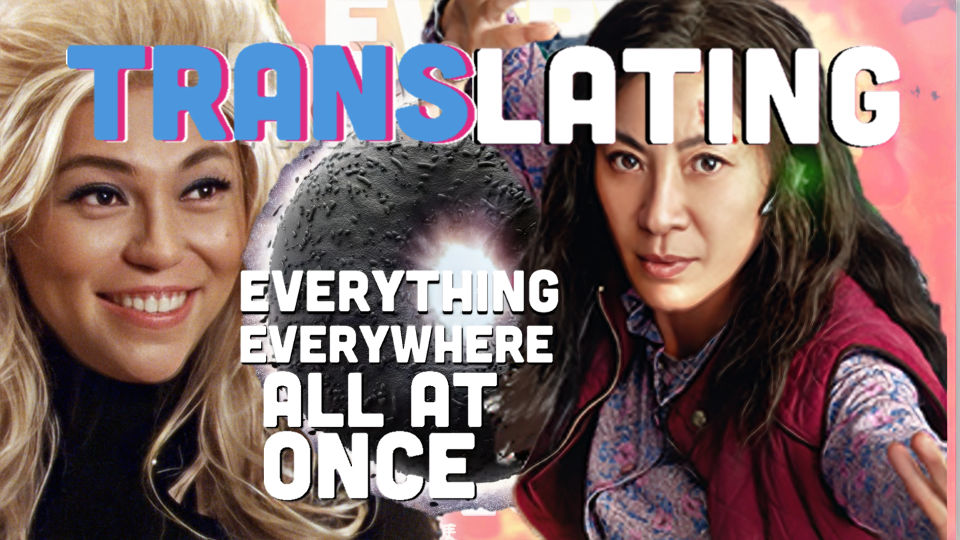
Welcome to TRANSlating Everything, a newsletter covering pop culture, news, politics, and the science of storytelling through the lens of a cool trans mom. You can support my work by leaving a tip or choosing a paid subscription to Translating Everything on Medium or Substack.
This weekend, I finally checked out a movie starring an acclaimed Asian actress who may finally get her due by leading audiences through an inter-dimensional rupture in which an unlikely hero must use the skills, wisdom, and insight from each multi-verse version of herself to return to her own dimension and finally accept her authentic self.
But enough about The Actress, the dimension-spanning short film starring trans actress Isabel Sandoval in which, well…see the above description.
BOOM GOES THE DYNAMITE!!!
You’ll never watch Everything Everywhere All At Once the same way again
Let’s get this right out of the bag.
Everything Everywhere All At Once is bursting with connections to trans cinema.
I’m not making that up. In a variety of interviews, the directors said EEAO is “100% a response to The Matrix.” Like the Wachowski siblings’ later collaboration on the film adaptation of Cloud Atlas, their first movie about The One That Was Many stretched the existential limits of gender, orientation, and identity.
Then in 2022 came Everything Everywhere All At Once.
“We wanted to make our version of [The Matrix],” Daniel Kwan said. “It was wild to be like oh, ‘We took so long that the Wachowskis beat us to it.’”
Well, I hate to break it to you guys, but…
An Asian filmmaker already beat you both to the punch.
The Actress: Isabel Sandoval
Her name is Isabel Sandoval, a trans filmmaker and actress with skyrocketing acclaim across the awards circuits. With her starring role in The Actress (2021), she beat both the Wachowskis and the Daniels to reinventing The Matrix.
Directed by SCAD alum Andrew Ondrejcak, The Actress is a 5-minute short film that retells scenes from classic cinema if a trans woman had played the lead.
In the film, a woman moves through time and space, embodying classic Hollywood’s feminine ideals on a journey of self-discovery. As Sandoval’s character searches for her unique voice, she infiltrates cinematic history and shape-shifts through Hollywood’s most iconic roles.
Yet, when she realizes her sense of self has become obscured, she begins to cast off the glamorous façade, musing on the roles we each play as we reinvent our identities to discover our true selves.”
TRANSlated actors and movies in The Actress include:
Jane Wyman — All That Heaven Allows (1955)
Marlene Dietrich — Morocco (1930)
Isabella Rossellini — Blue Velvet (1986)
Jane Fonda — Barbarella (1968)
Malcolm McDowell — A Clockwork Orange (1971)
Jessica Chastain — The Tree of Life (2011)
TRANSlating the connections between The Actress and Everything Everywhere All At Once
Like Evelyn and her ironically-named daughter Joy in Everything Everywhere All At Once, Isabel’s character in The Actress discovers that expanding her sense of self into everything, everywhere, all at once was never going to turn her into all that she is not.
It would only ever clarify all that she already is. Some would say those limits and how we negotiate them are what truly define our identities. It’s a truth that speaks to the lived experience of being trans or gender non-conforming, but also to what everyone, everywhere faces in all journeys to healing and wholeness.
On a recent episode of the Filmcast, Dave Chen said:
People are reading EEAAO as a metaphor for whatever is true for them. It’s a metaphor for menopause. It’s a metaphor for parenting. It’s a metaphor for the immigrant experience. And there is something really special about how this movie has managed to capture the imagination of any people going through any challenges of any kind.
Indeed, Filmcast guest Walter Chaw — a film critic increasingly acclaimed as much for his activism as his cinematic trash talk — expanded on his thoughts from his article for Film Freak Central, saying:
When you force [a person] to think about everything that could have been that’s not what their current life is, it does induce depression. It does make [everything] become meaningless. Which ultimately is what the villain of the film suffers from. Once she comprehended all possibilities — everything — it all became meaningless. That’s ultimately the darkness that threatens to destroy the universe.
Filmcast co-host Jeff Canatta, one generation removed from an immigrant family, shared wisdom born from his recent years as a new father finding compassion for his parents, his children, and himself.
Every time you feel like a failure, it’s just a lack of perception. [The movie is a] symbol of the decisions we make in our lives and how life continues regardless of how those pan out.
In the same conversation, Walter Chaw touched on the moment we find that compassion and accept each other as individuals rather than extensions of ourselves.
It’s an extraordinary act of generosity to see people outside of the box that we put them in. Maybe that’s what the movie is about.
It’s that same ambitious pursuit of authentic existence that ties EEAAO and The Actress to the reality-hopping spectacle made by the Wachowskis in 1999.
TRANSlating the connections between Everything Everywhere All At Once and The Matrix
From Walter’s Film Freak Central article:
[Joy seeks out every multiverse iteration of her mother] in an effort to get a single version of her mother to talk her out of annihilation, but each iteration proves incapable because of the solipsism that seems to unite the Evelyns across the timeline. (It’s not Joy’s burden to understand how that solipsism is born more from regret than from narcissism.)
Now, finally, our Evelyn, this failed Evelyn, the statistical anomaly, who is so without obvious wins, is the one most likely to figure out how the only expectation she really needs to honour — indeed, really can honour — is to be in love with the people who love her. It’s not a message to lie down and die, it’s a prayer for appreciation of grace when it appears.
You saw those two words, didn’t you?
Statistical anomaly.
Walter says Evelyn being one is the distinction that makes Everything Everywhere All At Once not a retelling of The Matrix.
In his article for FFC, Walter continues:
Evelyn is warned that something transdimensional is making its way towards her — a source of great destabilizing power that is looking, for whatever reason, for every version of Evelyn in search of The One. I was afraid this was a messianic plot in the vein of The Matrix, but it’s not that. The Evelyn of the audit is, in fact, “the One,” though not because she’s the best Evelyn — because she’s the worst: the most despairing, the most useless, the one who made every possible “bad” decision in her life to lead her to this moment, having accomplished nothing and about to lose everything.
But I think he missed, like, what The Matrix was about?
Each iteration of the Matrix can be seen as a multiverse — sort of what some people suspect our own universe to be like. One universe dies so that the next can be born.
The Matrix continues its cycle of rebirth by guiding every iteration of The One to meet the Architect. Each time, The One has no emotional connection to humanity beyond their purpose to ensure its survival, and so they accept their role in perpetuating the cycle. His function is, for lack of a better word, perfect.
Neo, aka Mr. Anderson, changed that. Whereas each other One succeeded, he failed. Where the other One pushed past every human obstacle, this Neo was grounded by his love for Trinity.
The Architect told him choice was the problem. If only Neo would continue not to choose.
Instead, he chose love.
That’s a beautiful thing, right? Even if breaking the cycle of generational trauma almost got everyone killed.
See also: You’ll Never Watch The Matrix The Same Way Again
EEAAO, The Actress, and Generational Trauma
The Daniels — directors for EEAAO — speaking to David Chen at Culturally Relevant:
With the generational trauma, I’m realizing as a parent, the act of breaking the cycle of generational trauma can feel so small, and yet it probably is the hardest thing any of us will ever do. And maybe the most important thing any of us we will ever do. Because whatever we pass down to the next generation is going to affect the way that they deal with the hardship and conflict and turmoil that’s going to be coming at them in the next 50 years.
It’s the smallest thing that I felt no one would care about. And now that I’ve put out this movie, I want to take every filmmaker friend I know and just shake them and be like, “That small thing is so important. And you don’t know why yet, but you should chase it. Because someone’s going to need to hear it, someone’s going to see it, and maybe that small thing will become so universal that it literally like changes the conversation around how we talk about it.”
Walter Chaw writing for Film Freak Central:
Like Eternal Sunshine of the Spotless Mind, Everything Everywhere All at Once is about the messiness of being human, as well as the glory of it: how you know it’s all going to pot but you do it anyway, because life is for the living of it. It’s about how suffering is quotidian, yet the moments of happiness, however brief and however rare, are enough to keep you warm, if only you could learn to blow those embers into a fire. I wonder if my mom will be able to have this kind of clarity before she goes — that she was in love and loved, and nothing else really mattered. I hope so. I want that for her. I want it for me, too.
Walter Chaw speaking to David Chen at Culturally Relevant:
I wonder how much of our parents — my parents — weren’t wrapped up in the wrong thing. Not out of malice or coldness, but out of what they felt like they needed to do to survive here and stay here.
Walter Chaw speaking to the Filmcast:
If everything works out, you will outlive [your kid]. That’s if everything goes right. Our lives are tragic. In between, there have to be these moments where we can have a moment and recognize the people that we love as special and precious.
Devindra Hardawar speaking as Filmcast co-host:
These moments of joy you can spark between yourselves…those are the light.
See also: Walter Chaw And Dave Chen Overcome Everything Everywhere All At Once
Expanding trans cinema representation beyond The Actress and Everything Everywhere All At Once
Inspired no doubt in part by the much-neglected majesty of Michelle Yeoh, the director Andrew Ondrejcak made The Actress in order to continue their mission to empower and elevate women and queer people in the ways that reflect the oft-invisible strength in our lived experiences.
In an interview for MovieMaker, the director said:
Many of the filmmakers and films that I love have a problem with the role of women: mainly, the women were hapless or ancillary or decorative. With this in mind, I asked my friend Isabel Sandoval to collaborate on this important work and embody these women anew to offer them the authority and voice they never had. The final film is both an homage to filmmaking and a rejection of some of the problematic ideas of the past — part film, part feminist manifesto.
At the end of the day I think it’s a real piece for Isabel, and I think it’s really important that people can see that a trans person can play a mother — that a trans person, a good actress, can traverse all of these roles. And even if you don’t know she’s trans, [she’s] an Asian woman. There’s a conversation about beauty and a queer political dimension to it, but at the end of the day, it’s about showcasing someone’s talent that would otherwise not have the opportunity.
Indeed, a passion for inclusivity and empowerment for undiscovered voices was partly what fueled the Daniels through every obstacle to making Everything, Everywhere, All At Once.
Speaking to David Chen at Culturally Relevant, one of the Daniels explained:
It’s the smallest thing that I felt no one would care about. And now that I’ve put out this movie, I want to take every filmmaker friend I know and just shake them and be like, “That small thing is so important. And you don’t know why yet, but you should chase it. Because someone’s going to need to hear it, someone’s going to see it, and maybe that small thing will become so universal that it literally like changes the conversation around how we talk about it.
Perhaps the greatest achievement of movies like The Actress and Everything Everywhere All At Once is in how they reclaim and reshape movies not just from each actor’s catalog, but all that American filmmakers like Quentin Tarantino have attempted to borrow from Asian cinema history.
In his later thoughts for the Filmcast, Walter Chaw said that Everything Everywhere All At Once “reclaims all of those appropriations.”
But the movie’s most surprising connection to another dimension-hopping movie franchise turns out to also be the most obvious.
Is Everything Everywhere All At Once part of the MCU?
I mean…this was produced by the Russo brothers. Those guys who directed two Captain America movies, as well as Infinity War and Endgame.
Plus, like, the multiverse is infinite.
And Michelle Yeoh already portrayed Aleta Ogord in Guardians of the Galaxy Vol. 2 and Ying Nan in Shang-Chi and the Legend of the Ten Rings.
This means that Kang, in all of his canonical variants, has at least one trans person.
Move over, Loki. You’re no longer the only genderfluid character in the MCU.
Like all things, nothing’s official until Kevin Feige says so. Still, it’s hard to imagine him coming up with a counter argument that wouldn’t sound as silly as his cameo in She-Hulk.
As for the rest of Disney…
See also: Is “Everything Everywhere All At Once” Part Of The MCU?
The Daniels, like the MCU, is committed to supporting LGBTQ+ people
There was one aspect of the movie’s impact that Daniels did want to guide along, and it involved the plot point surrounding the sexuality of the teen character, who is gay. While Everything Everywhere All at Once had yet to secure a distributor in China, the pair were adamant that it could only do so with censors allowed her sexuality to remain a part of the story. “It’s not up to us if the movie is released in China, but all we said was that you can’t cut the gay storyline,” Scheinert said. “That’s all we’ve said to foreign distribution people.”
Their commitment echoes comments made last year by Chloe Zhao, who was similarly insistent that the sexuality of the character Phastos in The Eternals remained intact. The movie never opened in China.
“If they had to censor other stuff, and we got a gay story out there, we’d be so thrilled,” Daniel Scheinert said.
Daniel Kwan chimed in: “The movie doesn’t work without it.”
Stephenie puts all of her remaining thoughts onto this bagel
The multiverse shows us not just all the variations of who we could yet be, but who we already are, and the infinite paths that might have brought us to this moment.
Because if there are an infinite number of universes, there are an infinite number where we began in circumstances similar to everyone we hate. Everyone we despise for being lazy, cruel, insensitive, depressed, volatile, racist, sex-crazed, transphobic…
In another universe, the difficulty they face when trying to see us beyond their limits is the same difficulty they face when trying to accept their own authentic selves.
The multiverse shows us that we have at some point been those people.
The multiverse shows us that at some point, those people have been us.
In time, we’re broken apart into a million pieces or more, each one returning to the stars, to everything, to everywhere, all at once.
We don’t need to be perfect. Just like Neo, just like Isobel, just like Evelyn, the very things that make us imperfect are the things that make special.
There is no One. There is only The One we already are. Each one of us a statistical anomaly with a specialty that in our world might seem ordinary, but when translated to a world without sausage fingers…
We could try to fight it.
Or we could accept the existential crisis that comes from trying to deny one simple truth:
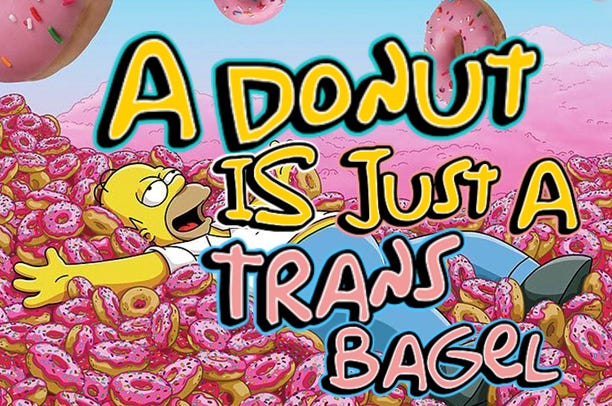
Fun stuff and what to watch next
Everything Everywhere All At Once completes guild sweep with WGA win ahead of Oscars
How Virginia Woolf’s Orlando Inspired Andrew Ondrejcak’s “The Actress”
Walter Chaw: trans ally
Walter: “After [Everything Everywhere All At Once], I started donating a few bucks every time JK Rowling said something horrible. I can clap back and she’ll never read it, but my followers will read it, and they love me. Instead of that, I’m just going to give $5 to a trans charity every time she says something [awful].”
What to watch after The Actress and Everything Everywhere All At Once
1. Trans Movie Streaming Lists
| 5 Free Trans Movies Better Than Anything On Netflix | Trans Men: 7 Documentaries, 2 Movies, 1 Comedy Special, All Free | 10 Extremely Trans Xmas Streaming Selections | Now THAT’S Trans Xmas Music! Volume 1 | 13 More Free Streaming Trans Movies | Two Cool Trans Mini-Series On YouTube Better Than Anything On Netflix | 8 Foreign Films About Trans Women | 17 Incredibly Short Transgender Short Films |
2. Under the Banner of Heaven
Isabel Sandoval directed the penultimate episode of the true crime limited series Under The Banner of Heaven for Hulu, which put her next to our friendly neighborhood trans ally Andrew Garfield.
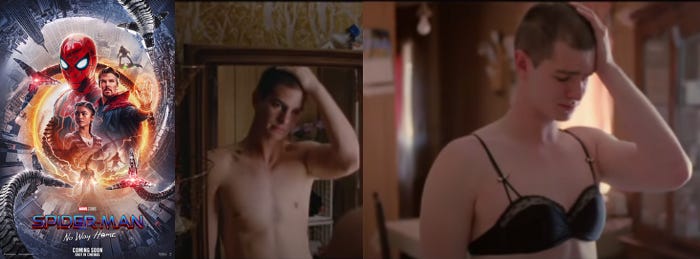
Garfield said in an interview, “[Isabel Sandoval] was so precise, so sensitive, so professional, so talented, and astute, and I really, really enjoyed her as a director.” As reported by CNN Philippines, her episode earned the praise “10/10 beautiful trans girl multi hyphenate excellence” from a Letterboxd user, which the director tweeted next to Andrew Garfield’s quote.
3. Shangri-La
Isabel also wrote and directed the short film Shangri-La, the 21st commission from Miu Miu Womens Tales. Her earlier film Lingua Franca — featured in “8 Foreign Films About Trans Women” at Prism & Pen and distributed by Ava DuVernay’s ARRAY — was the first Filipino film in main competition at BFI London in its 63-year history.
4. Michelle Yeoh Kicks Ass
About Stephenie Magister
If you like my work and want to support it, buy me a cup of coffee! For more of my content, subscribe to my Substack newsletter: Translating Everything




